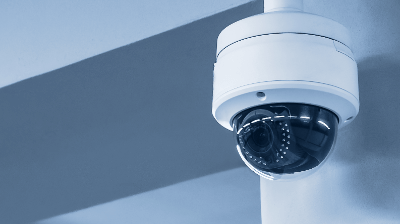What Is a Network Camera?

A network camera, also known as an IP Camera, is a video camera integrated with LAN capabilities. These cameras are assigned an IP address, enabling internet connectivity. This feature allows users to monitor live footage from the camera on devices like smartphones and remotely control its operations.
Distinct from web cameras that require a computer connection, network cameras operate independently, removing the necessity for continuous computer operation. This autonomy is a major advantage of network cameras over traditional web cameras.
Uses of Network Cameras
Network cameras, with their built-in CPUs, provide advanced processing and the ability to send notifications to other devices. They are versatile in applications such as:
1. Surveillance Cameras for Stores and Factories
They are used for real-time monitoring in areas like store premises and parking lots. Some models offer facial recognition features, sending alerts when registered individuals are detected. Unlike conventional analog surveillance cameras, network cameras don’t require nearby recording devices, enhancing security by preserving footage even if the camera is damaged or tampered with.
2. Monitoring Work Conditions
Network cameras are valuable for monitoring employee activities in retail environments or factory settings. They help in improving customer service and identifying work hazards, thus enhancing efficiency and safety.
Principles of Network Cameras
Network cameras utilize various communication methods, such as wired or wireless LAN networks, including:
1. Peer-to-Peer (P2P)
This method enables direct communication between the camera and other devices, offering high fault tolerance and cost-effectiveness. However, security risks are a concern, especially when default settings are used.
2. Dynamic DNS (DDNS)
DDNS services link dynamic user IP addresses to fixed hostnames. This facilitates remote connections through the registered domain name.
3. Static IP Address
Using a fixed IP address provides stability, though it may incur additional costs for the dedicated line from a provider. A DNS server is unnecessary due to the static nature of the IP address.
4. Universal Plug and Play (UPnP)
This method, suitable for UPnP protocol-compatible network cameras and routers, simplifies communication. However, its vulnerability may increase the risk of unauthorized access.
Types of Network Cameras
Network cameras are available in indoor and outdoor models:
Indoor types are used for monitoring purposes like child or pet surveillance and store security. They are often compact and may include motion detection features.
Outdoor types are built to withstand various weather conditions, including waterproofing, and typically have wide-angle or telephoto lenses to cover larger areas.
Physical variations of network cameras include:
1. Box-Shaped
This traditional security camera design is noticeable, creating a deterrent effect. It can be equipped with a protective housing, but may have blind spots.
2. Dome-Shaped
Dome-shaped cameras are discreet and capable of covering wide areas, ideal for indoor settings like restaurants or shops.
3. PTZ
These cameras offer remote control of pan, tilt, and zoom functions but require active operation for monitoring, potentially missing continuous coverage in a single location.